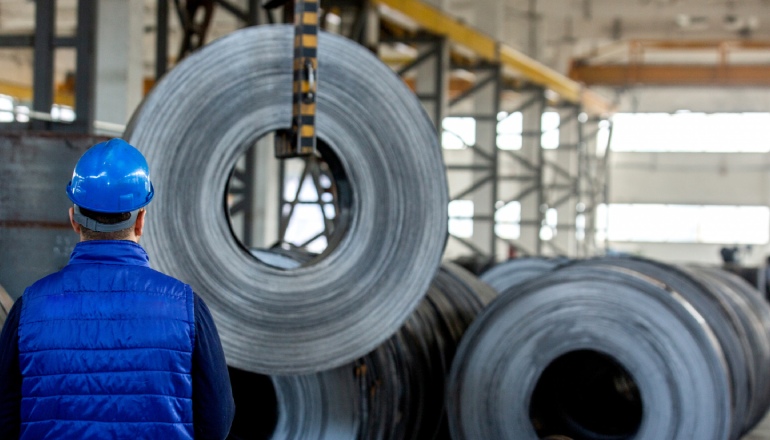The steel industry’s decarbonization has been the main focus because it is essential to meeting the world’s net-zero emission targets. However, the cost of green steel production, lack of incentives, and regulations have created hurdles. But the good news is that the goal is achievable. While the cost of producing green steel may not be a hurdle for a few, regulations and price incentives are essential to drive the shift in investment and consumption towards green steel production, at large.
Undoubtedly, steel production is a major contributor to global carbon emissions, accounting for about 8% and roughly 30% of the segment emissions, respectively. In addition, the steel sector is also the leading consumer of coal, a key source of the heat and carbon required to convert iron ore into steel.
The good news is that the domestic primary steel producers are set to achieve their goal of reducing carbon emissions. According to a recent report from rating agency Crisil, Indian steel companies had set an ambitious target of reducing carbon emissions below 2 tCO2/tcs by 2030. The industry has already made significant progress. Steel manufacturers’ reported carbon emissions have decreased from over 3 tCO2/tcs in fiscal 2005 to 2.35 tCO2/tcs, which translates to a 65% reduction in targeted emissions.
The report also highlighted the benefits of emission reduction. Reducing emissions broadens fund-raising avenues, improves export competitiveness, and has a positive impact on credit quality. However, Crisil acknowledges the challenges that lie ahead to completely transitioning to low-carbon steel, also known as green steel.
Shifting Towards Low-Carbon Steel Production
Coal-fired steel plants are major contributors to CO2 pollution. To address this challenge, companies are exploring alternative solutions, such as using low-carbon energy sources like hydrogen, coal gasification, or electricity for steel production.
Meanwhile, media reports in China indicate that the nation’s steel industry could reduce carbon emissions by as much as 11% by 2025 if the government sets a more aggressive goal for the use of electric arc furnaces (EAFs).
Cost of Green Steel Production
The cost of green steel production in comparison to traditional methods and the viability of large-scale production are important considerations in this discussion. While the cost premium exists, it is not as high as initially feared, depending on the production location and method. The cost premium for green steel can range from negligible to around $150 per metric ton.
Crisil previously discussed the difficulties that Indian steel producers may encounter as a result of the EU’s CBAM. This mechanism may result in a 17% increase in the cost of India’s steel exports to the EU. When paired with greenflation, the overall effect might reach 40%.
The CBAM Deadline:
As per CBAM regulations, exporters will need to submit quarterly reports on their emissions starting October 1, 2023. From December 31, 2025, they will be required to purchase Emissions Trading System (ETS) certificates to offset their greenhouse gas emissions. Initially, industries will be granted free allowances to ease the transition, but these allowances will progressively disappear by 2034. The ETS tax will then become applicable to the portion of emissions not covered by free allowances.
The Indian steel industry is emerging as a frontrunner in decarbonization. Their significant progress in slashing emissions, exceeding halfway to their 2030 target, is a testament to their commitment to environmental stewardship.

